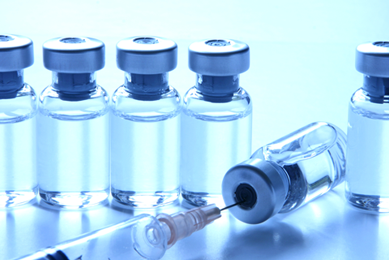Why it’s important
As SARS-CoV-2 continues to evolve and new variants emerge, current medical interventions will need to be reevaluated for their efficacy. To perform these studies, researchers must have access to viral stocks that are genetically and functionally similar to the original clinical isolate to ensure the reliability of the resulting data. Therefore, identifying cell lines that enable successful propagation of SARS-CoV-2 while maintaining the genome is paramount.What’s the solution?
Recent studies have revealed that the SARS-CoV-2 multibasic cleavage site (MBCS) in the spike protein is needed for viral entry into cell lines that express an active serine protease-mediated entry pathway.1,2 Propagation of the virus on Calu-3 cells (ATCC HTB-55), which are human lung epithelial cells that express this pathway, prevented cell culture adaptions in the MBCS.2 Essentially, cellular expression of the serine protease TMPRSS2 decreased the replicative fitness of MBCS mutant SARS-CoV-2 populations as an intact cleavage site was required for entry into these cells. This in turn resulted in out-competition by wild-type viruses still harboring the intact cleavage site.2 These results underscore the value of using Calu-3 cells for SARS-CoV-2 propagation in vitro.What we found
Building on these observations, ATCC collaborated in a recent study to further evaluate if growth of SARS-CoV-2 on serine protease–expressing Calu-3 cells would eliminate any previously acquired virus subpopulations exhibiting a mutated furin cleavage site. Here, two separate laboratories in the group obtained the same SARS-CoV-2 B.1.351 isolate that had been passaged twice through Vero E6 cells (ATCC CRL-1586). Following independent growth on Calu-3 cells, both laboratories discovered that viral variants harboring mutations previously acquired in the furin cleavage site were lost from the population. These results indicate that while SARS-CoV-2 will acquire mutations in the furin cleavage site when propagated on Vero cells, these mutant populations can be eliminated if the virus stock is subsequently propagated on Calu-3 cells.
Overall, the results from this study demonstrate that growth of SARS-CoV-2 on Calu-3 cells eliminates the formation of mutations in the furin cleavage site—a phenomenon that is frequently seen during propagation in Vero cells—thus maintaining the genomic stability and pathogenicity of virus stocks needed for critical studies and assays.

David Yarmosh, MS
Lead Bioinformatician, ATCC
David Yarmosh is a lead bioinformatician in ATCC’s Sequencing and Bioinformatics Center. He’s a graduate of New York University’s Tandon School of Engineering. He has been working in large data aggregation and analysis since 2013 and microbial genomics with a focus on biosurveillance R&D efforts since 2016. David has led international training exercises in Peru and Senegal, sharing metagenomic analytical capabilities. His interests include genomics database construction, metadata collection, drug resistance mechanisms, bioinformatics standards, and machine learning. Since joining ATCC in 2020, David has worked extensively in SARS-CoV-2 classification, epidemiology, and genomics evaluation, including enhanced and uniform variant reporting. He has contributed more broadly to genomics reporting and analytical standardization and he has helped develop the podcast Behind the Biology, which he now hosts.
Nikhita Puthuveetil, MS
Senior Bioinformatician, Sequencing and Bioinformatics Center, ATCC
Nikhita Puthuveetil is a bioinformatician at ATCC that performs routine bioinformatics analysis on internal sequencing submissions, primarily SARS-CoV-2 samples as well as plasmid and bacterial samples. She also works with her team to aid in the development of the ATCC Genome Portal. She first joined ATCC as an bioinformatics intern in 2019 where she worked to create an internal sequencing dashboard in R to track and manage sequencing at the Sequencing and Bioinformatics Center. She has an MS in Bioinformatics from Virginia Commonwealth University.
Dig deeper into global health

Coronavirus
We offer COVID-19 tools and resources to contain the impact and investigate the long-lasting effects of the coronavirus disease.
More
Discover the ATCC Genome Portal
The ATCC Genome Portal is a rapidly growing ISO 9001–compliant database of high-quality reference genomes from authenticated microbial strains in the ATCC collection. Through this cloud-based platform, you can easily access and download meticulously curated whole-genome sequences from your browser or our secure API. With high-quality, annotated data at your fingertips, you can confidently perform bioinformatics analyses and make insightful correlations.
More
Infectious Diseases
Despite their small size, microorganisms have a dramatic effect on human life. To control the spread of pathogenic species, researchers need access to credible reference materials and reliable data.
More
Cell lines for enhanced virus production
Accelerate your vaccine and gene therapeutic development projects with ATCC’s cell lines for enhanced viral production.
More
Vaccine Development
ATCC provides the virus-producing cell lines, microbial strains, and pneumococcal polysaccharides needed for vaccine research and development.
More
Animal Cells
Animal cells from ATCC provide taxonomic equivalents to human physiology and allow researchers to study the impact of toxins and therapies on cells from animals.
MoreReferences
1. Mykytyn AZ, et al. SARS-CoV-2 entry into human airway organoids is serine protease-mediated and facilitated by the multibasic cleavage site. eLife 10: e64508, 2021. PubMed: 33393462
2. Lamers MM, et al. Human airway cells prevent SARS-CoV-2 multibasic cleavage site cell culture adaptation. eLife 10: e66815, 2021. PubMed: 33835028